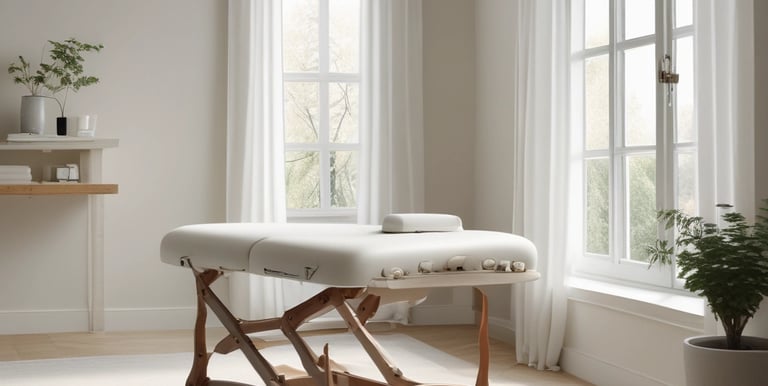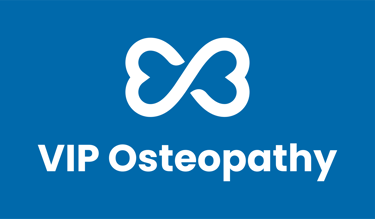Why see an osteopath?




Pain relief and injury management
Osteopathic care may comprise of a comprehensive medical history and thorough examination. Your osteopath will create a treatment plan individualised to each patient, focusing on enhancing their overall health, wellbeing and function.
Wellness and Support
An osteopathic consultation involves a hollistic approach to treatment, and may assist with alleviating pain and improving function. Osteopaths may see patients recovering from a variety of injuries including but not limited to musculoskeletal conditions, sports injuries and workplace or motor vehicle injuries.
What is osteopathy?
Osteopathic treatment is a holistic approach to healthcare, focusing on the relationship between the body's structure and function. Your osteopathic treatment will involve a thorough history and detailed assessment to develop an effective treatment plan, unique to you. Our team may use a variety of manual techniques including massage, mobilisation, manipulation, stretching, cupping and dry needling to reduce pain and improve mobility and overall wellness. Exercise rehabilitation may also be included during your osteopathic treatment, incorporating targeted exercise programming to promote functional movement and enhance recovery.
Our team educates and empowers their patients to take charge of their health, by providing them with the knowledge and tools needed to understand their bodies and make informed decisions about their wellbeing. At VIP Osteopathy, we pride ourselves on our professional service, integrity, and the lasting relationships we build with our patients. This patient-centred approach considers not only the physical symptoms but the lifestyle and environment of the individual, aiming to restore balance within the body and enhance its natural ability to heal.
Osteopaths may support patients with a variety of common conditions and issues. Frequently encountered presentations in osteopathic practice include;
Lower Back Pain
Low back pain may commonly occur due to irritation of the joints or discs in the lower back following heavy lifting, repetitive bending, or ... read more


Neck and Shoulder Pain
Pain occurring in the neck, mid back or shoulder often arises from poor posture when sleeping, repetitive strain from desk based work, or following injuries such as whiplash or ... read more
Plantar fasciitis occurs when the plantar-fascia, a ligament connecting the toes to the heel bone becomes inflamed. ... read more
Plantarfasciitis




Rotator Cuff Injuries
Rotator cuff injuries involve damage to the muscles and tendons that stabilise the shoulder joint. These injuries are often caused by ... read more


Hip Pain - Trochanteric bursitis
Hip pain may feel like discomfort or aching in or around the hip joint and groin. A deep, aching pain in the side of the hip may be due to trochanteric bursitis ... read more
Patellofemoral pain syndrome or runner's knee, may occur following repetitive running, climbing stairs or squatting. ... read more
Runner's knee




Pregnancy Related Discomfort
Pregnancy-related spinal discomfort is a common presentation with many women experiencing discomfort in the lower back, pelvis, ... read more


Tendinopathy
Tendinopathy refers to the degeneration or inflammation of a tendon, commonly caused by overuse, repetitive strain, or aging. Common examples include tennis elbow ... read more
Bursa are small, fluid-filled sacs that support joints and reduce friction between muscles, ligaments and bones. Bursitis occurs when the bursa become inflamed following ... read more
Bursitis




Osteoarthritis and Joint pain
Osteoarthritis is a degenerative joint condition characterised by the breakdown of cartilage, leading to pain, stiffness, and reduced mobility. It commonly affects ...read more


Chronic Pain - Fibromyalgia
Chronic pain is pain that persists for greater than three months or longer than the usual tissue healing timeframe for that injury. Fibromyalgia is a common condition ...read more
Sciatica is a term that is used to refer to pain in the lower back which radiates along the pathway of the sciatic nerve, from the lumbar spine into the hip and ... read more
Sciatica




TMJ - Jaw Pain
The temporomandibular joint, also known as the TMJ, is the joint which connects the jaw bone (mandible) to skull. The TMJ has a ... read more


Headaches and migraines
Headaches and migraines may arise due to a variety of causes including; tightness in the muscles of the neck and upper back ... read more
Sports injuries are injuries that occur to muscles, ligaments, tendons, or bones during physical activity. These injuries can result ... read more
Sports Injuries






